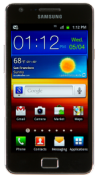The ChatON service will allow users to send short messages to each other for free, including texts, photos, contacts, and calendar. The service will be available at first on Samsung devices running their "semi-smart" mobile operating system, called Bada.
 |
| A Samsung device running Bada. |
Ho Soo Lee, Head of Media Solution Center at Samsung Electronics, said in a statement, "With ChatON, Samsung has vastly simplified mobile communication by allowing users to connect to our upcoming feature phones and all major smartphones in the market. Users around the world can now enjoy easier and richer interactivity with whoever they want, in the format they want."
While the ChatON service seems like a pretty good idea, like I mentioned at the beginning of the post, Samsung is competing with some pretty big contenders. RIM's BlackBerry Messenger was recently revamped to become more "social", Apple has a similar service coming out soon on all iOS devices, called iMessage, and of course Facebook, with more than 750 million users, recently launched it's Facebook Messenger app for iOS, so Samsung's app will have to be pretty good to compete.
Samsung's ChatON service will make it's official debut later this week at Berlin's IFA Conference, and will be available in over 120 countries with 62 languages.
So, the ChatON service has a lot to compete with, but it's one of the only services available on more than one platform, with it's Bada, iOS, and Android apps. Overall, it seems like a great service, and I wish it luck in succeeding in the large world of IM services.
More information available in the below video.



